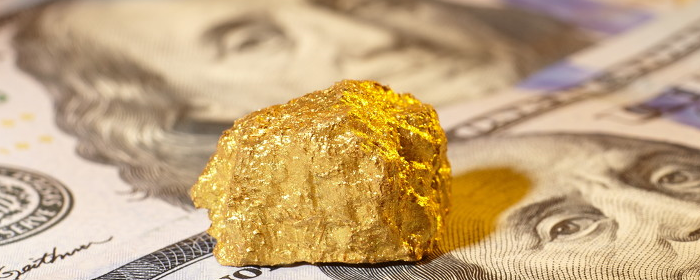Gold Enhancer Curved Wedding Bands: The Perfect Customizable Complement to Your Engagement Ring
When it comes to wedding jewelry, harmony between your engagement ring and wedding band is key. Enter the Gold Enhancer Curved Wedding Band—a sleek, adaptable design crafted to nestle seamlessly with your engagement ring. Whether your center stone is a solitaire, halo, or vintage-inspired design, these bands offer a tailored fit and endless customization options. Let’s explore why curved wedding bands are a must-have and how bespoke designs elevate their appeal. What Makes a Gold Enhancer Curved Wedding Band Unique? Unlike traditional straight bands, curved wedding bands are designed with a subtle arc to perfectly contour around your engagement ring. Here’s what sets them apart: Custom Contours: The curvature matches the exact shape of your engagement ring, eliminating gaps for a unified look. Comfort Fit: Smooth, ergonomic design prevents rubbing against the engagement ring’s prongs or settings. Enhanced Sparkle: Curved bands often feature milgrain, pave diamonds, or engraved details that amplify your ring’s brilliance. Metal Versatility: Available in 10K, 14K, or 18K gold (yellow, white, or rose) to complement your existing jewelry. Why Choose a Custom-Made Curved Wedding Band? Personalization transforms a beautiful ring into a meaningful heirloom. Here’s how bespoke curved bands stand out: Perfect SymmetryJewelers can adjust the band’s curve angle to align with your engagement ring’s profile, whether it’s a high-set diamond or a low-profile bezel. Metal MatchingCustomize the gold alloy (e.g., 14K rose gold) to perfectly mirror your engagement ring’s hue and durability. Stone HarmonyAdd accent diamonds or gemstones that echo your engagement ring’s side stones or centerpiece. Engraved DetailsIncorporate initials, dates, or symbolic patterns inside the band for an intimate touch. Future-Proof DesignCurved bands can be resized or adapted if your engagement ring style evolves. Design Options: Create Your Ideal Curved Band Feature Customization Choices Gold Type 10K, 14K, or 18K yellow/white/rose gold Band Width 2mm (delicate) to 6mm (bold) Finish Polished, matte, hammered, or brushed Stone Settings Pave diamonds, channel-set gems, or a minimalist plain band Engravings Names, coordinates, infinity symbols, or floral motifs New! Select options Gemstone Wedding Bands, Nature Inspired Engagement Rings, Shop All Rings, Wedding Marquise Cut Moss Agate and Lab Diamond Enhancer Curved Wedding Band – Nature Inspired Yellow Gold Bridal Ring $850.00 Original price was: $850.00.$690.00Current price is: $690.00. -19% Select options Gemstone Wedding Bands, Lab Diamond Wedding Bands, Nature Inspired Engagement Rings, Shop All Rings, Wedding Vintage Moss Agate and Diamond Wedding Band – Rose Gold Natural Inspired Curved Stacking Ring $525.00 Original price was: $525.00.$425.00Current price is: $425.00. -24% Select options Gemstone Wedding Bands, Nature Inspired Engagement Rings, Shop All Rings, Wedding Unique Moss Agate and Diamond Wedding Band – Vintage Curved V-Shaped 14K Rose Gold Leaf Nature-Inspired Ring $450.00 Original price was: $450.00.$340.00Current price is: $340.00. -33% Select options Gemstone Wedding Bands, Wedding Unique Moss Agate and Black Rutilated Quartz Wedding Band Gold Ring Art Deco Eternity Band Matching Rings Personalized Gift For Her $585.00 Original price was: $585.00.$390.00Current price is: $390.00. -23% Select options Gemstone Wedding Bands, Wedding OVEELA Natura Moss Agate Stacking Wedding Band In 14K Yellow Gold Eternity Stacking Ring, Matching Promise Ring for Women $440.00 Original price was: $440.00.$340.00Current price is: $340.00. -16% Select options Gemstone Wedding Bands, Wedding Marquise Cut Nature-Inspired Moss Agate and Diamond Wedding Band – 14K Solid Gold Ring, Anniversary Gift $430.00 Original price was: $430.00.$360.00Current price is: $360.00. Why Curved Wedding Bands Are Trending Reddit and Instagram Buzz: Couples share their “stacked ring” photos, praising curved bands for their snug fit and elegance. Vintage Revival: Curved designs echo Art Deco and Victorian-era jewelry, blending nostalgia with modern minimalism. Practicality: Ideal for active lifestyles—no snagging on clothing or jewelry! FAQs How do I measure the curve for my custom band? A jeweler will create a 3D model or wax mold based on your engagement ring’s dimensions for precision. Can curved bands be worn alone? Yes! Their elegant design works solo, but they’re crafted to shine alongside an engagement ring. Are curved bands more expensive than straight ones? Customization may add cost, but standard curved bands are priced similarly to traditional styles. How long does customization take? Typically 4–6 weeks, depending on design complexity and stone sourcing. Will a curved band damage my engagement ring? No—properly fitted curves prevent friction. Opt for rounded edges for extra safety. Can I add gemstones to a curved band? Absolutely! Pave diamonds or colored stones enhance sparkle without compromising the curve. Do curved bands require special care? Clean like any gold jewelry: mild soap, soft brush, and regular polishing. What if my engagement ring isn’t symmetrical? Custom bands can mirror asymmetrical designs—share detailed photos with your jeweler. Can I pair a curved band with a non-traditional engagement ring? Yes! They work with pear, oval, or even geometric-shaped rings. Are curved bands resizable? Slight resizing is possible, but significant changes may alter the curve. Discuss with your jeweler first.


